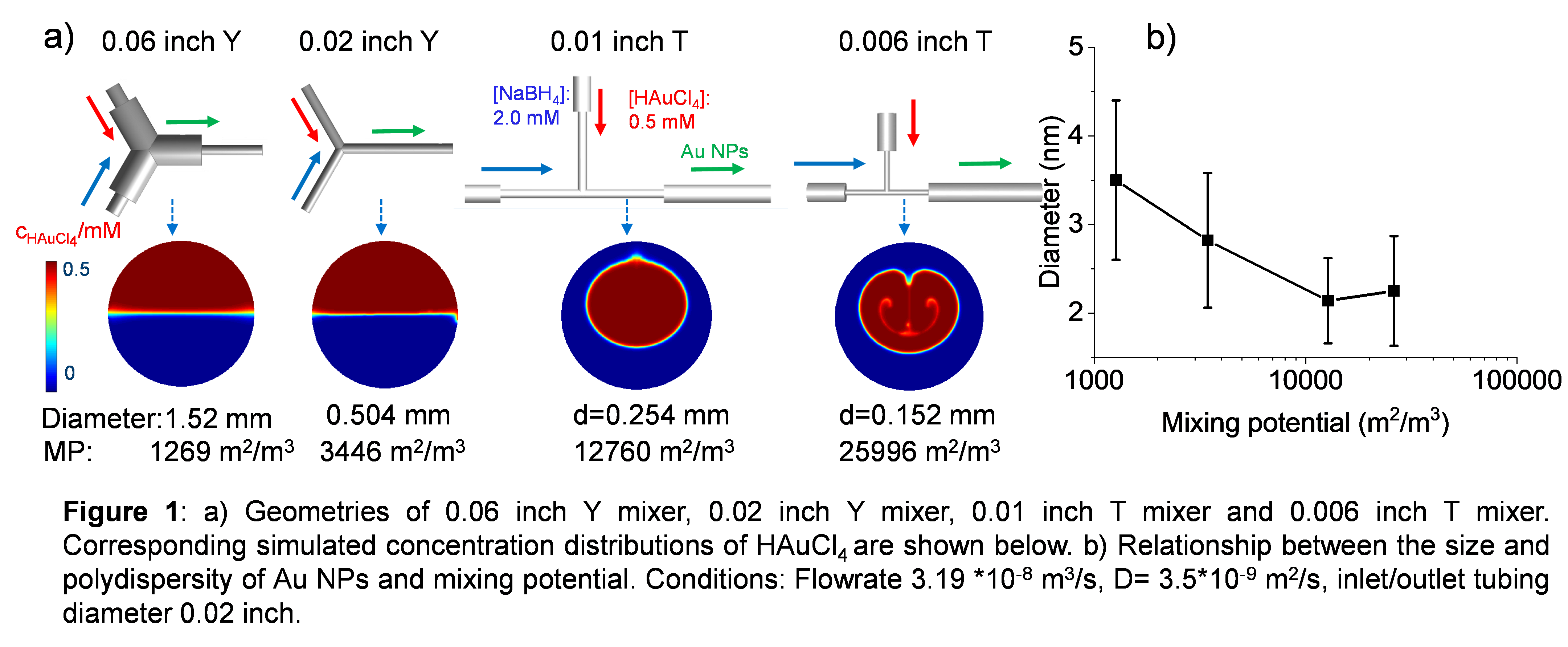2020 Virtual AIChE Annual Meeting
(255h) The Role of Mixing in the Size and Polydispersity of Gold Nanoparticles Synthesised in Microreactors
Authors
Herein, we present the design of a continuous microreaction platform for the synthesis of Au NPs using only sodium borohydride as a reducing agent and electrostatic stabiliser. Its high reduction potential promotes a fast nucleation rate. We demonstrate that the mixing potential (MP) defined as the specific contact areas between the two streams containing the metal precursor and the reducing agent (2) dominates the size of the resulting Au NPs. Exquisite size control can be achieved from 2.1 ± 0.5 nm to 5.6 ± 1.9 nm by simply manipulating the design of the mixer and flowrate, keeping the rest of the conditions (e.g. concentration, temperature, etc) constant.
Full understanding of the mixing effect is gained using computational fluid dynamic simulations. Backward particle tracking is adopted to simulate convection and the posterior Lagrangian transport model is solved to determine diffusion in order to reduce the effect of numerical diffusion (false diffusion), which arises from truncation errors associated to representing the fluid flow equations in discrete form (3).
References:
- K-J. Wu, et al. React. Chem. Eng. 2, 116-128 (2017).
- Bothe, et al. Chem. Eng. Sci. 61, 2950-2958 (2006).
- Matsunaga, et al. Lab Chip 13, 1515-1521 (2013).

